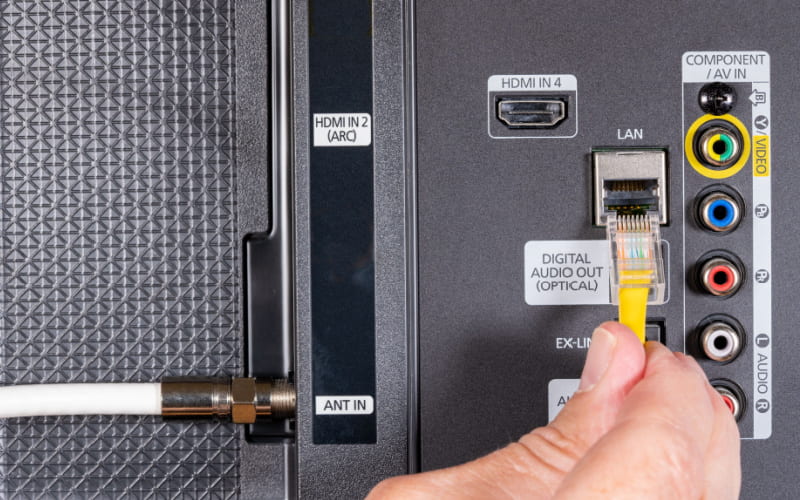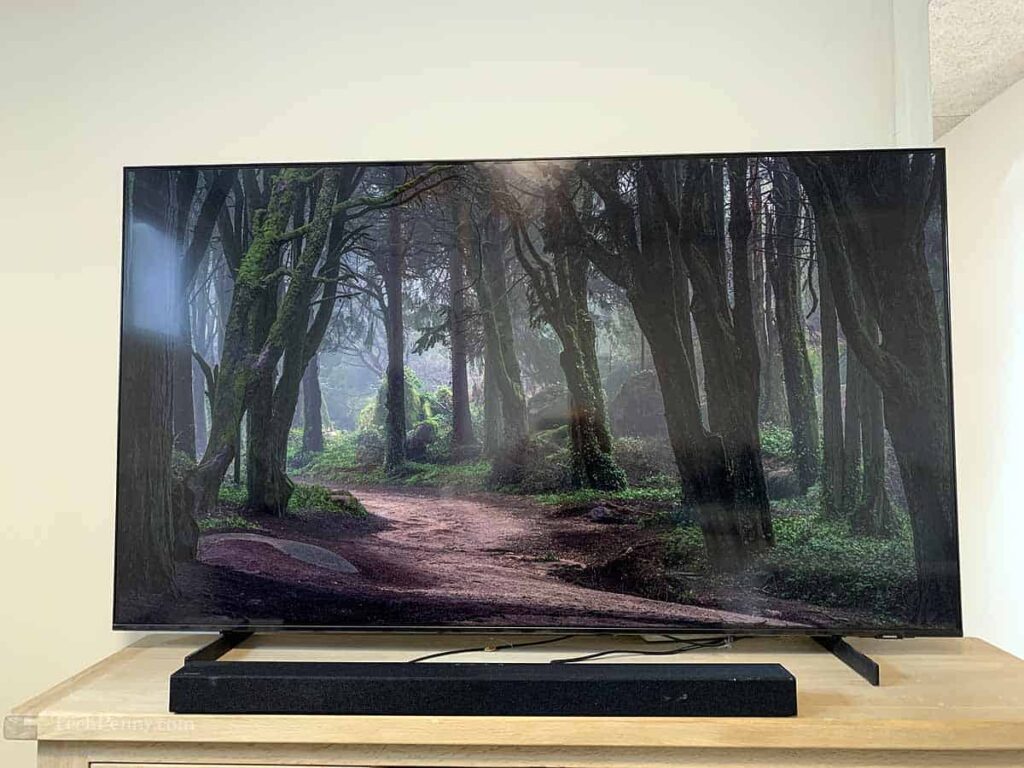If your Bush TV can’t connect to WiFi, here’s what you can do. First, double-check your WiFi name and password – make sure you type them correctly. If your TV is far from the WiFi, try moving it closer or moving the router. Make sure your TV works with your WiFi type. Restart your TV and router and see if there are any TV updates. If you’ve used a different WiFi before, reset your TV settings. Also, check if your router settings match your TV’s security settings.
Furthermore, look out for things like MAC address filtering or security settings blocking your TV. If your WiFi is still weak, you can use a WiFi extender. If nothing works, you might have to reset your TV, but remember to save your important stuff first. If all else fails, get in touch with Bush customer support for help with your specific TV.
What are the common causes of connectivity issues?

In addressing these common causes of connectivity issues, it’s important to systematically troubleshoot each one to identify the root of the problem.
Incorrect Network Credentials
This is one of the most common reasons for connectivity problems. If you enter the wrong WiFi network name (SSID) or password, your TV won’t be able to establish a connection. Double-check the credentials and ensure they are accurate. Typos or mistakes in the password can lead to authentication failures.
Weak WiFi Signal
The strength of your WiFi signal plays a crucial role in connecting your Bush TV to the network. If the TV is located far from the router or if there are obstacles like walls or electronic interference, the signal can weaken. You may need to move the TV closer to the router or reposition the router to improve the signal strength.
Network Compatibility
Different WiFi networks use various standards, such as 802.11n, 802.11ac, or 5GHz. It’s important to check if your Bush TV is compatible with the network in terms of supported standards. Older TVs may not support the latest WiFi standards, and this incompatibility can prevent a successful connection.
Firmware Issues
Outdated firmware on your Bush TV can lead to connectivity problems. Manufacturers release firmware updates to improve device performance and fix bugs. Check if there are any available firmware updates for your TV and apply them if necessary. Updating the firmware can resolve many issues, including WiFi connectivity.
Network Settings
Your TV’s network settings are crucial for establishing a connection. If you’ve previously connected your TV to a different network, these old settings might interfere with the current connection attempt. Resetting the network settings on your TV and configuring them for your current network can often solve this issue.
What are the troubleshooting steps for connectivity issues?
By following these troubleshooting steps in a systematic manner, you can increase the chances of resolving the connectivity issues with your Bush TV and enjoy a stable connection to your WiFi network.
Check Network Credentials
Double-checking your network credentials involves verifying the accuracy of your WiFi network name (SSID) and password. Pay close attention to uppercase and lowercase characters, special symbols, and any spaces. Ensure that you’re entering the right information, as any mistake can prevent a successful connection.
Improve WiFi Signal Strength
To enhance WiFi signal strength, you can:
- Reposition your router: Place it in a central location in your home to reduce interference and ensure better coverage.
- Use a WiFi extender or repeater: These devices amplify the WiFi signal, extending its range to reach your Bush TV if it’s located far from the router.
- Reduce interference: Minimize the number of devices or obstacles (like walls) between your router and TV.
Verify Network Compatibility
Ensure your Bush TV is compatible with your WiFi network’s standards. Check the TV’s specifications to see which WiFi standards it supports (e.g., 802.11n, 802.11ac). If your TV doesn’t support the same standards as your router, you may need to update your TV or use a different network.
Reboot TV and Router
Power cycling your TV and router can often resolve connectivity issues. Turn off your TV, unplug the router, wait for a minute, and then plug the router back in. Afterward, power on your TV. This process can clear temporary glitches in the network.
Update Firmware
Check if there are any available firmware updates for your Bush TV. Manufacturers release updates to fix bugs and improve device performance, including network connectivity. Make sure your TV is running the latest firmware to minimize issues.
Reset Network Settings
If you’ve previously connected your TV to a different network, old network settings may interfere. Reset the network settings on your TV and configure them for your current network. This action can eliminate any conflicts from previous connections.
Review Router Security Settings
Ensure that your router’s security settings, such as encryption protocols (WEP, WPA, WPA2, WPA3), match your TV’s capabilities. Mismatched security settings can lead to authentication failures and prevent the TV from connecting to the network.
Address MAC Filtering and Firewall Settings

Check your router’s settings for MAC address filtering and firewall or parental control rules. Ensure that your TV’s MAC address is allowed in the router’s settings. If you find any rules that block your TV’s access, modify or remove them to enable the connection.
Consider Using a Wi-Fi range Extender
If the WiFi signal remains weak due to distance, consider using a WiFi range extender. These devices amplify the signal, extending its reach to areas that were previously out of range. Placing a range extender strategically can significantly improve your TV’s connectivity.
Factory Reset as a Last Resort
A factory reset should be your last resort. This action erases all settings and data on your TV, returning it to its original state. Before performing a factory reset, make sure to back up any important data or settings. Only use this option if all other troubleshooting steps have failed to resolve the issue.
FAQ’s
Why is my Bush TV saying no signal?
Your Bush TV may display a “no signal” message when it’s not receiving input from the connected device or when the TV source is set incorrectly. Ensure the TV is on the correct input source, and check the cables for a secure connection.
What are common faults with Bush TV?
Common faults with Bush TVs can include issues like WiFi connectivity problems, power supply issues, sound or picture quality problems, and remote control malfunctions. These issues may require troubleshooting or professional assistance.
How do I reset my Bush Smart TV?
To reset your Bush Smart TV, you can usually go to the TV’s settings menu and look for a “Factory Reset” or “Reset TV” option. Follow the on-screen instructions to perform the reset.
Why has my Bush TV just stopped working?
There could be various reasons why your Bush TV stopped working, such as power supply issues, firmware problems, or hardware failures.
Where is the on-off switch on a Bush TV?
The location of the on-off switch on a Bush TV can vary depending on the model. Look for a physical button on the TV itself or use the remote control’s power button to turn the TV on or off.
Why does my smart TV keep losing signal?
Smart TVs can lose signals due to various reasons, such as weak WiFi, interference, or problems with the router. Try moving the TV closer to the router, ensuring a strong WiFi signal, or troubleshooting WiFi connectivity issues to prevent signal loss.
Final Words
If your Bush TV won’t connect to WiFi, here’s what to do. First, make sure you typed the right WiFi name and password. If your TV is far from the WiFi, move it closer or the router. Check if your TV can work with your WiFi type. Look for updates for your TV and use them.
However, if you’ve used another WiFi before, reset your TV settings, and make sure your router settings match your TV’s security. Also, check if there are any rules in your router settings, like MAC address blocking. If the WiFi is still weak, think about using a WiFi booster. Only reset your TV as the very last thing, but save your important stuff first.

